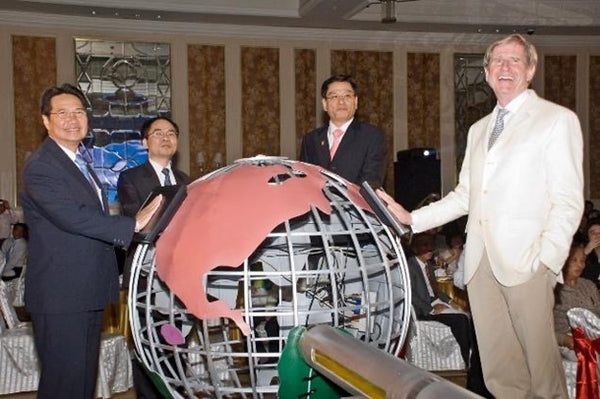For some thirty years or so, I have had an interest in oil and gas exploration and production in the Cuu Long Basin offshore Vietnam. In fact, we were a pioneer there and have produced some 150 million barrels of oil to support the economy of Vietnam over this period. I feel a close connection to the people and the country but have been out in the cold during the pandemic which has precluded our travel there. Nonetheless, we have followed up our historical exploration and production success with continued investment to maintain and increase oil production which backs out the insidious coal alternate power source. Success in the oil production sector in Vietnam is often measured by the number of extravagant First Oil parties one has had. Shown below is the first of four such events in 2008. We expect to have at least one more blockbuster extravaganza in our Vietnam future.

Over the span of four workdays, given the 13-hour time zone difference, I spent four “late-nighters” in Vietnam Zoom Management and Operations Committee meetings to set budgets and agree on quite large investment projects for next year. Can you imagine having some thirty or so people in four locations – Ho Chi Minh City, Hanoi, Bangkok and the Texas Hill Country –participate in one session? It is not an ideal situation but better than doing it by pony express. In any event, the wisdom from my Vietnamese friends and associates is that Vietnam will not open to foreign visitors until after Tet (the Lunar New Year) in early February. The reasoning is at least one million expatriate Vietnamese would come from abroad to visit their historical villages, see their families and pay homage to the tombs of their ancestors which is too great a pandemic risk despite the tourist boon to the economy. Mayhem does not begin to describe the level of crowds, shopping, eating and family visits during that period.

In the meantime, the owners of the factories that have placed Vietnam in a pole position as one of the world’s largest suppliers of apparel and footwear have a labor shortage. Following a severe summer lockdown, which we observed in our office in Ho Chi Minh City, many factory workers are reluctant to return to their former life. Recently, Sui-Lee Wee and Vo Kieu Bao Uyen published an article in The New York Times entitled As Holidays Near, Bosses Try to Coax Vietnam’s Workers Back to Factories which included a personal interview with Ms. Thu Trang, a former factory worker. By way of reference, Thu Trang traveled to Ho Chi Minh City, Vietnam in 2019, ecstatic to have a factory position where she made almost three times what she made as a farmer back home.
However, the factory where she worked making Adidas, Converse and New Balance shoes virtually shut down. She and her co-workers lived in dire, cramped conditions, subsisting on a diet of rice and soy sauce. When conditions loosened in October, Thu Trang went home to her village and has no interest in returning. If her co-workers all share the same view, there will be fewer folks finding Nike sneakers, Lulelemon yoga pants and Under Armour tank tops in western Christmas stockings.

Do Quynh Chi, director of the Research Center for Employment Relations which researches trends in Vietnam, said 60 percent of the 300 workers she interviewed in the last week of September told her they wanted to return to their home villages after realizing they had no safety net in the city. Vietnam has become the world’s second-largest supplier of apparel and footwear after China. The low-cost labor force with sewing skills has become the locomotive leading Vietnam’s economic record growth. Nonetheless, much must be done to build a level of confidence to cause the workers to leave their home villages and return to the chaos of Ho Chi Minh City. I like it there but staying at the Park Hyatt and attending meetings is a bit different than what these ladies face in the massive factories.

On the other hand, labor shortages and productivity slowdowns have an impact on exports and goods being shipped to the western markets. Further, there are ongoing logistical issues causing containers to stack up such as shown below.

Whereas I am anxious to return to Southeast Asia to see my work associates, partners and friends, I am not unhappy to forego an office in London. Virtual meetings do not replace personal interactions, but I can function reasonably well in rapid-fire internet transmissions in many different time zones around the world. On the other hand, it is time to get back on the road and enjoy the places, people and food that I have been missing.

The coin bracelet represents colonial periods of rule of Ceylon (now Sri Lanka) ranging from Victoria in 1898, Edward VII in 1906, George V in 1914 and a commemorative Dutch coin for the period preceding British rule.

